
THREAT & RISK ASSESSMENT BRIEF UPDATE
Brief Update Nο 25/13 Date: 13 June 2025
STATEMENT
This document has been approved for distribution by Sea Guardian S.G Ltd / Operations Department. The provided Intel and Information derive from open sources, the Institute for the Study of War (ISW), the Joint Maritime Information Center (JMIC) and United Kingdom Maritime Trade Operations (UKMTO), respective Web Pages and products retrofit the company’s Strategic / Operational and Security situational awareness processes for risks and threat assessment/impact to the Security of Maritime operations. All rights reserved, “no part of this Risk assessment may be reproduced in an form (electronical, mechanical, paper or other means) without written permission by Sea Guardian SG Ltd” which maintain the rights for personal data of this document writers. Under no Circumstances can Sea Guardian SG Ltd be held responsible for any loss or damage caused by a reader’s reliance on information obtained by this Assessment, especially on its firms, company’s management or individual decision-making.
Objectives
- The purpose of this brief is to provide periodically, in 15-day cycle, the maritime industry and Security Stakeholders or Shareholders with:
- Major maritime security incident summary and analysis in Geo-strategic frame for Operational Security and Security of shipping operations for the period 30 May-13 June 2025.
- Threat assessment updates concerning military operations – terrorism – piracy and also cargo theft, smuggling, stowaways, ships fired and crew loses.
- Overview of risk assessment and relevant information, in order to support operational planning and decision as well as the needs for assuredness (impact for insurance or special security needs) after threats and risks Analysis (BCP/BIA).
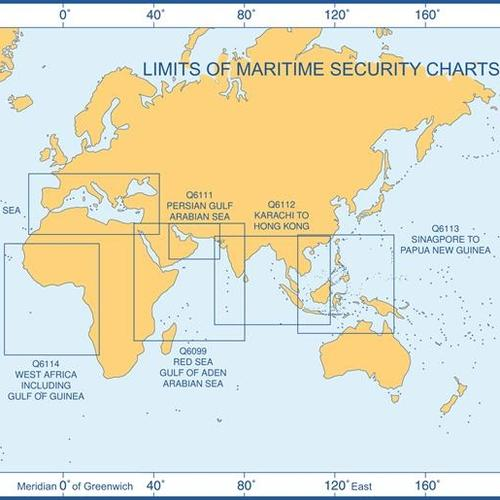
RECENT KEY DEVELOPMENTS
- On May 30, according to a statement reported by Reuters, the eastern Libyan government may declare a state of force majeure at oil export terminals and oil fields due to “repeated attacks on the National Oil Company (NOC)”, the Benghazi-based government said. Although the East Libyan government is not internationally recognized, many of Libya’s oil fields are in the east and under the control of the eastern region’s strongman, General Khalifa Haftar, of the Libyan National Army (LNA). There are rumors that the headquarters of Libya’s NOC, based in Tripoli, have been attacked. The eastern government said it could temporarily move the NOC headquarters to one of the “safe” cities such as Ras Lanuf and Brega, both of which are controlled by the government in the east. “Further analysis and assessment is followed by this procedure in the threat and risk assessment sections”.
- On May 30, it was stated by “the Guardian” that the Nigerian military has detained more than 30 soldiers and police officers for allegedly stealing weapons from its stockpiles and selling them to armed groups in the country, including jihadists. Nigeria government is combating a more than 15-year jihadist insurgency in the northeast, as well as a farmer-herder conflict in the north-central region, violent secessionist agitation in the southeast and rampant kidnap-for-ransom in the northwest.

- On May 31, it is stated that the United Nations nuclear watchdog says Iran has increased its stockpile of highly enriched, near weapons-grade uranium by 50 percent in the last three months. The report by the International Atomic Energy Agency (IAEA) on Saturday comes as nuclear deal negotiations are under way between the United States and Iran, with Tehran insisting its nuclear program is for peaceful purposes only.
- On May 31, Libyan mass media stated that the United Nations Security Council has extended its mandate allowing member states to inspect ships suspected of violating the arms embargo on Libya. The decision renews the mandate for six months, enabling member states or regional organizations – such as the EU’s Operation IRINI – to inspect vessels in international waters heading to or from Libya, provided there are reasonable grounds to suspect that they are carrying weapons or related materials in violation of the embargo.

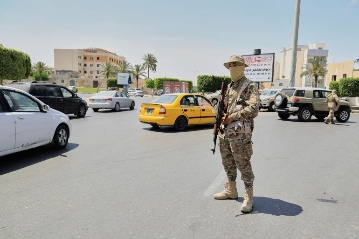
- On June 01, Hamas responded to a US ceasefire proposal by saying it is prepared to release 10 living Israeli hostages and 18 dead hostages in exchange for a number of Palestinian prisoners, while requesting some amendments to the plan. It was neither an explicit rejection nor a clear acceptance of the US terms, which Washington says Israel has accepted.
- On June 02, Iran has demanded that the United States clarify exactly how sanctions will be lifted if the two sides are to reach a new agreement on Tehran’s nuclear program. Unverified reports claim that Iran sees the offer as a “non-starter” and is preparing to reject it. However, Tehran is now demanding Washington’s offer in detail, reflecting skepticism voiced earlier this year by Supreme Leader Ayatollah Ali Khamenei, while on June 04, Iran’s Supreme Leader Ayatollah Ali Khamenei has criticized the US proposal for a new nuclear agreement, reiterating that Iran will not stop enriching uranium. Iranian negotiators are set to respond in the coming days to what the White House called a “detailed and acceptable” plan presented at talks last Saturday.

- On June 02, newly appointed Sudanese Prime Minister Kamil Idris has urged countries supporting the Rapid Support Forces (RSF) to cease “criminal operations”. “Sudanese national security and state authority are completely upheld by eliminating the rebellion and all forms of insurgent militias, urging countries that support these militias to completely cease these criminal operations, and targeting countries that plan, finance, and cooperate in their execution,” he said in an address in Port Sudan on Sunday. Sudan’s government has accused the UAE and neighboring African states including Chad, Libya and South Sudan of supporting the RSF throughout the conflict.
- On June 02, members of the Syrian military took part in a graduation ceremony for what Syrian reports said was the 56th Division of the new Syrian army. Syria has been rebuilding its armed forces since the fall of the Assad regime. It has also been working to integrate various armed groups into the new army. There are other units from southern Syria, as well as units linked to Turkey, that have joined the new forces. In addition, the Syrian Democratic Forces, backed by the US, are seeking to come to an agreement about integration. Another small force called the Syrian Free Army, backed by the US at Tanf, is reported to be part of the new 70th division of the Syrian army.
- On June 02, the Wall Street Journal article on Russian oil and Greek shipowners stated that Greek shipowners are once again becoming a mainstay of exports, having already returned to Russian ports. Anticipating a possible official reactivation of Russia in Europe’s energy industry, in the context of negotiations to end the war in Ukraine, Greek shipping companies are claiming the “pole position” in the restart.
- On June 03, it is reported by BBC Africa that United Nations trucks carrying aid for the war-torn Sudanese region of North Darfur have been attacked, with initial reports of “multiple casualties”, a spokesperson for the organization has said. The UN has not said who was responsible, but explained that the convoy was attacked while waiting to leave for el-Fasher, a besieged city where famine conditions have been reported.

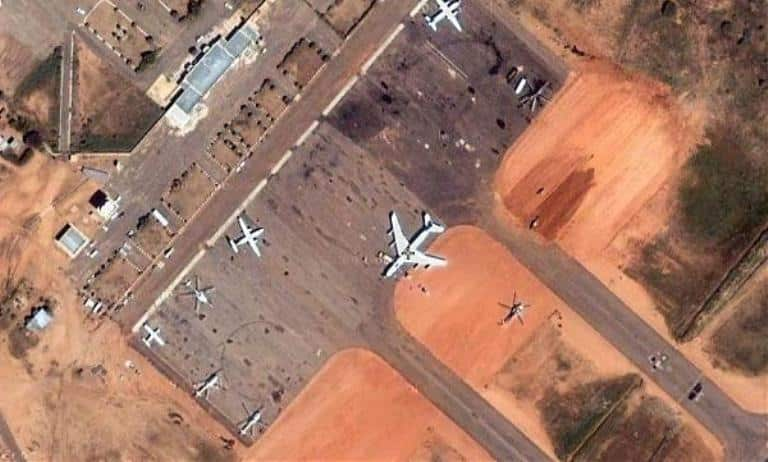
On June 03, Iranian Foreign Minister Abbas Araqchi told Lebanese officials on Tuesday that Iran wanted to turn a “new page” in relations with Beirut, hinting at a shift in diplomatic ties that were long grounded in supporting Tehran-backed armed group Hezbollah. Hezbollah was once a powerful armed movement and political party with sway over Lebanon’s state, but it was severely weakened by Israel’s bombing campaign last year. Since then, Lebanon’s U.S.-backed army commander was elected president and a new cabinet with curtailed influence for Hezbollah and its allies took power.

- On June 04, Israel National News published that Israel may be on the brink of civil war. An irreconcilable rift is beginning to open up between rival segments of Israeli society, which no amount of unilateral goodwill can amicably bridge. The tectonic fault lines, threatening to split the nation’s societal fabric asunder, center on Benjamin Netanyahu’s tenacious hold on power [after being elected democratically by a landslide], despite multiple attempts to pry it loose.
- On June 05, United States President Donald Trump has signed an executive order imposing a full travel ban on people from 12 countries and restricting the citizens of seven other countries, the White House said. The banned countries include Afghanistan, Chad, Congo, Equatorial Guinea, Eritrea, Haiti, Iran, Libya, Myanmar, Somalia, Sudan and Yemen. In addition to the ban announced on Wednesday, there will be heightened restrictions on people from Burundi, Cuba, Laos, Sierra Leone, Togo, Turkmenistan and Venezuela.
- On June 06, the International Committee of the Red Cross announced the closure of its offices in Niger and the departure of its foreign staff, four months after the ruling junta ordered the organization to leave the country. The ICRC confirmed the closure and departure in a statement on Thursday. In February, Niger’s Foreign Affairs Ministry had ordered the ICRC to close its offices and leave the country. No official reason was given for the military junta’s decision to shut down the organization’s operations in the country at the time.
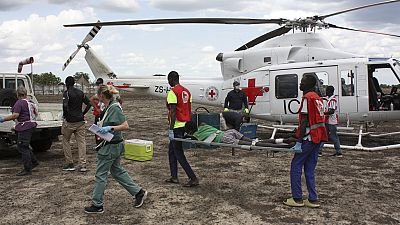
On June 06,
Israeli air strikes rocked
the southern suburbs of Lebanon’s capital on Thursday night, on the eve of the Eid al-Adha holiday, marking the latest major violation of the November 2024 ceasefire agreement. The Israeli army said it had struck the southern suburbs targeting forces belonging to Hezbollah’s “air unit”. Lebanese President Joseph Aoun denounced the attacks as a “flagrant violation” of the ceasefire that ended a year of conflict. Besides it is stated that the previous day, Israel revealed it has “activated” clans of Palestinians as part of its war in Gaza, confirming suspicions that it is working with anti-Hamas groups inside the enclave. A former Israeli minister accused PM Netanyahu of approving the transfer of large quantities of arms to organized crime families in Gaza.

- On June 06, Ethiopian Parliamentarian and former spokesperson of the Ministry of Foreign Affairs, Dina Mufti, has accused the Eritrean troops of occupying areas within the territory of Ethiopia. While calling the Eritrean government to pull its troops from many border areas of the Ethiopian territory, Mufti told local media on Thursday June 05, that the international community must put pressure on Eritrea to withdraw its troops from the neighboring Tigray region of Ethiopia. Mufti did not mention the border areas from which the Eritrean troops must withdraw.
- On June 07, the leader of al-Qaeda’s Yemen branch has targeted US President Donald Trump and tech billionaire Elon Musk over United States backing for Israel’s ongoing war on the Gaza Strip and its besieged Palestinian population. “There are no red lines after what happened and is happening to our people in Gaza,” said Saad bin Atef al-Awlaki in a half-hour video message that was spread online by supporters of al-Qaeda in the Arabian Peninsula (AQAP), the Yemeni branch of the armed group.
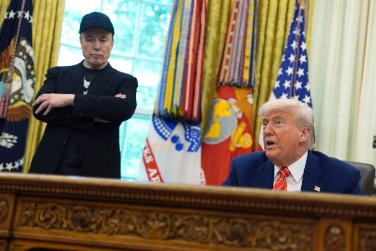
On June 09, the president of the Italian-Libyan Chamber of Commerce, Nicola Colcci, has said that the chamber intends to open an office in Benghazi to work closely with local business representatives. He explained that the goal is to establish cooperation between Italian and Libyan small and medium-sized companies to develop a joint business network and exchange technologies and expertise to access African markets that Libya has already reached. Benghazi is preparing to host Italian companies interested in expanding into Libya as part of the Libyan-Italian Economic Forum, scheduled to take place from June 24 to 27, according to Italian media.
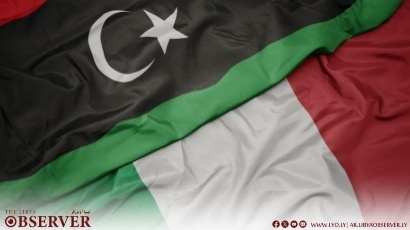
- On June 09, a new round of talks aimed at resolving the trade war between the US and China have started in central London. A senior US delegation, including Commerce Secretary Howard Lutnick, has met with Chinese representatives such as Vice Premier He Lifeng at Lancaster House to resolve tensions between the world’s two largest economies, which is threatening global growth. Last month, Washington and Beijing agreed a temporary truce over trade tariffs but each country has since accused the other of breaching the deal.
- On June 10, the Sudanese army has accused the forces of eastern Libyan military commander Khalifa Haftar of attacking Sudanese border posts, the first time it has accused its northwestern neighbor of direct involvement in the country’s civil war, now in its third year. The war between the Sudanese army and the paramilitary Rapid Support Forces (RSF), whom the military also accused of joint involvement in the recent attack, has drawn in multiple countries, while international attempts at bringing about peace have so far failed.
- On June 11, Britain, Norway, Australia, Canada and New Zealand have announced their sanctioning two far-right Israeli ministers for inciting extremist violence by Jewish settlers in the occupied West Bank. London said an asset freeze and travel ban would take effect immediately against Itamar Ben-Gvir and Bezalel Smotrich. We have an interview with US Ambassador to Israel Mike Huckabee, who called the sanctions “a shocking decision on the part of countries I consider to be allies”.
- On June 11, it is stated by CSIS that U.S. and Chinese officials finalized a new trade framework following two days of negotiations in London, which included U.S. Secretary of the Treasury Scott Bessent. According to President Trump, the agreement includes a commitment from Beijing to resume exports of rare earth elements and magnets to the United States, following two months of severe export restrictions that disrupted key inputs for the automotive, robotics, and defense sectors. The centrality of rare earth export restrictions to the trade deal underscores the criticality of minerals to the U.S. economy as well as the severity of the chokehold Beijing holds on global supply chains.
- On June 12, US ordered the non-essential US embassy staff and their dependents in Baghdad are to be evacuated from Iraq due to heightened security risks, US government sources have said. Officials did not say exactly what prompted the removal, but have been told Israel was ready to launch an operation into Iran, the BBC’s US partner CBS reported. This was part of the reason some Americans were advised to leave the region, officials said, adding that they anticipated Iran could retaliate on certain US sites in Iraq.
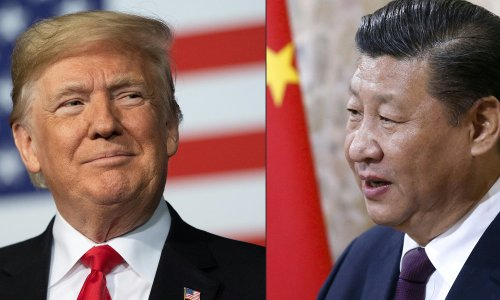
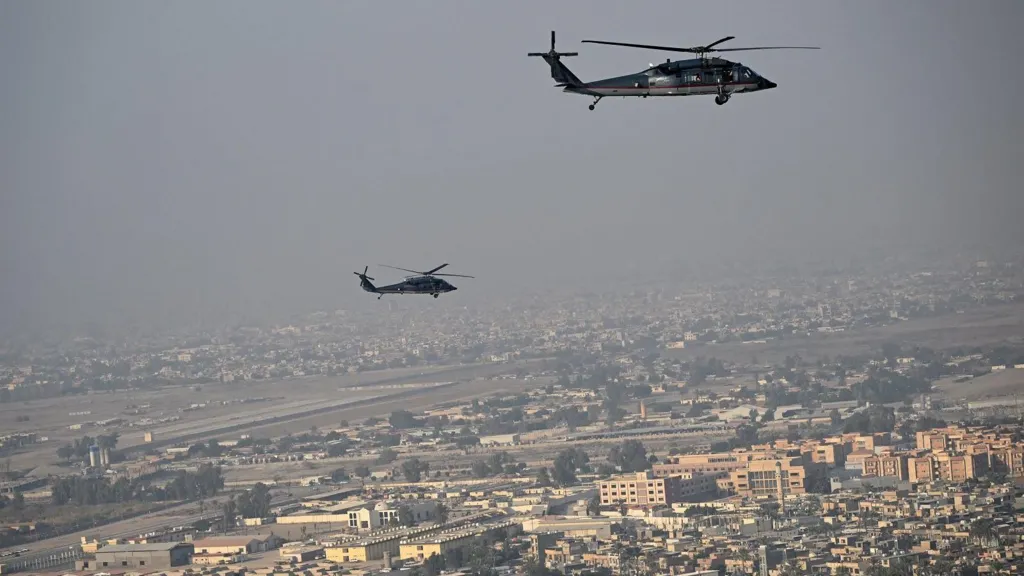
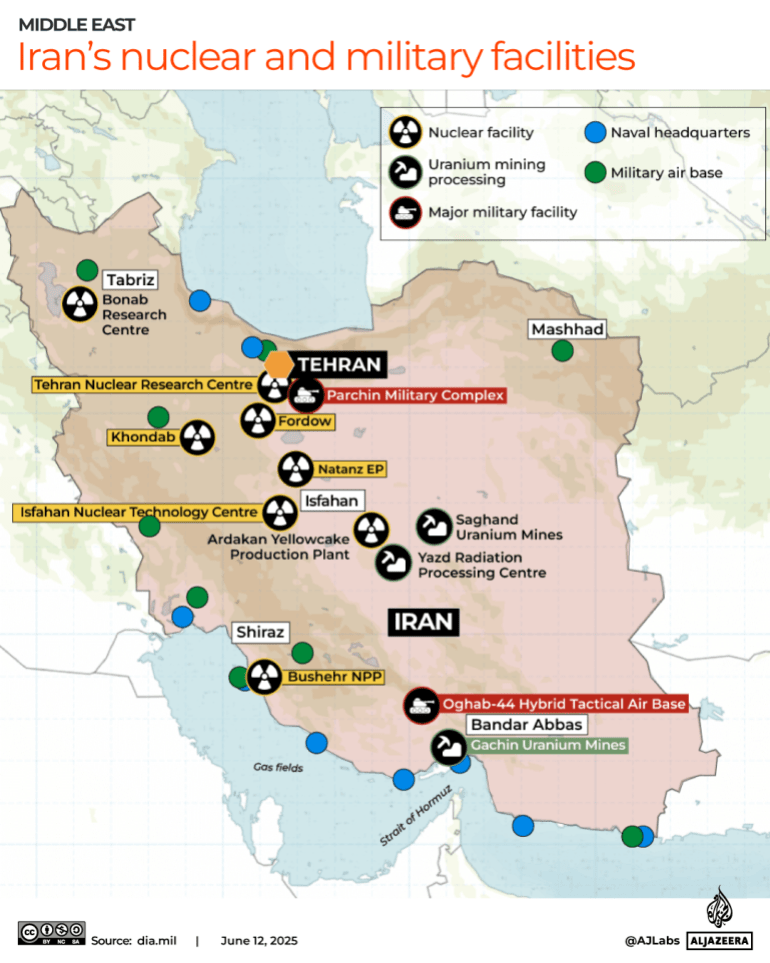
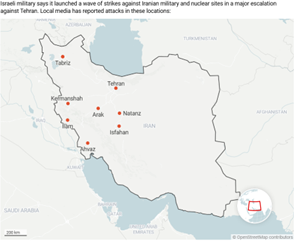
- On June 13, Israel Defense Forces (IDF) spokesperson Brig Gen Effie Defrin says Iran launched “approximately 100 UAVs towards Israeli territory”, which said they are working to intercept (it is estimated 0400-0500 GMT).
- On June 13, Oman, which has been mediating nuclear talks between the US and Iran over recent months, has decried Israel’s attacks as a “dangerous and reckless escalation” that “violates the principles of international law”. Trump’s Middle East envoy Steve Witkoff was due to meet an Iranian delegation this weekend in Oman for the sixth rounds of talks, aimed at curbing Tehran’s nuclear program.
- On June 13, the Jordanian Hashemite kingdom’s civil aviation authority says it “temporarily” closed Jordanian airspace to all flights “in anticipation of any dangers resulting from the escalation happening in the region”. Last year, some Iranian missiles that targeted Israeli military bases flew over Jordan (aviation traffic 06:30 GMT).

- On June 13, Saudi Arabia’s Foreign Ministry calls the Israeli strikes on Iran a clear violation of international laws and norms. “While the kingdom condemns these heinous attacks, it affirms that the international community and Security Council bear a great responsibility to immediately halt this aggression,” the ministry said in a statement.
THE GEOPOLITICAL PROFILES & INTERNATIONAL SECURITY (semi-annual review)
- GEO-political / Geo-Strategic profile: From a Strategic perspective, the schisms created by Russia and Iran in the unity of RIMLAND, for the areas that this article deals with, namely Syria and Yemen respectively, seem to have been neutralized for the time being, but not to have been eliminated. Their creation dates back several decades, from the time of the establishment of Assad dynasty and the creation of the state of Yemen, respectively. As far as EU is concerned, despite it contains in “western system” (sea-power) countries, its approach is more similar of the Russia’s concept (HEARTLAND’s concept) pursuing to have control on a “Living Space” around the union such as East Mediterranean, North Africa countries and several former USSR’s states.
- Geopolitics / Geo-economics Profile: The competition within the framework of Geo-economics is a little differentiated, mainly due to China, which try to apply its own Ge-economic concept being a country that its territories, geographically, belonging to both strategic systemic zones having resources and seeking to commerce them by itself. Concerning, EU with the lack of natural resources, its Geo-economy is fully abide by the “sea-power’s” financial approach policy with its members being geographically in the both “RIMLAND” and “HEARTLAND”.
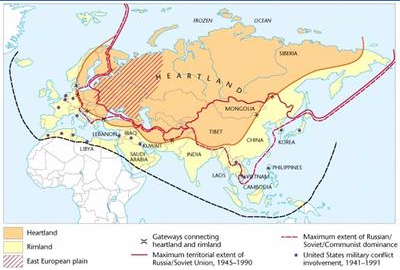

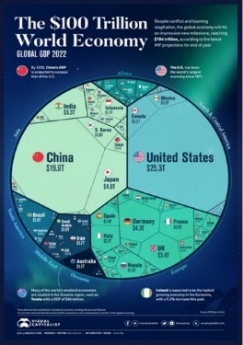
- International Security / Strategic sector: A new security situation is being reconstructed, always based on international Security rules, but excluding specific countries and areas from access to western states and regions, especially countries belonging to the “Trade Dependent Maritime Realm” systemic zone. Usually in these cases, Maritime Industry tends to trust domestic or regionally relevant security services and the new outcome will be the ensued after this battle of Strategy.
- Global Maritime Security profile: As the consequences from military or paramilitary actions having a direct threat of destroy against Merchant Shipping is going to be alleviated, there are signs of we shift back to traditional piracy risks and even if some civil conflicts either will continue or not. The risks from this return to traditional risks are ensued by the criminality for profit threats. The important factor of returning to Red Sea and Mediterranean routes is both the absence of war actions against merchant ships but utmost the products prices due to the higher expenses of shipping freights from east to west and vice versa. It is not the first time this assessment highlights the issue.
MARITIME SECURITY INCIDENTS: 30 May – 13 June 251
1 In accordance to JMIC and/or UKMTO sources
| INCIDENT No | INCIDENT Type | INCIDENT TIME | INCIDENT DETAILS |


UKMTO advisories
Even there aren’t incidents, UKMTO has published two advisories,
- on June 08, for vessels to exercise extreme caution in the vicinity of the port of Al Hudaydah and
- on June 11, for vessels are advised to transit the Arabian Gulf, Gulf of Oman and Straits of Hormuz with caution and are to report incidents or suspicious activity to UKMTO iaw BMP.
THREAT ASSESSMENT UPDATE:
Military operations – terrorism – piracy and also cargo theft, smuggling, stowaways
Military Operations
Red Sea – Yemen
The Houthis’ intent to continue to launch attacks on Israel appears to have remained unchanged, albeit toned down. While their intent to cease attacks on commercial shipping is becoming permanent, new threats to shipping approaching the coast and the wider area of Houthi-controlled ports, related to the harassment of shipping and electronic communications and navigation systems, continue to emerge, particularly in the wider area of Hormuz and Bab-el-Mandeb.
• Despite the Houthis’ statement to avoid attacks on shipping operations, it is estimated that the forces of the United Kingdom and the Israeli Air Force will maintain readiness to operate against them, aiming to completely destroy their military capabilities or denounce their subordination to Iran and terminate their support to Hamas in Gaza.
• It is estimated that as long as the US-IRAN negotiations on Iran’s nuclear program continue, at least publicly, it functions as a factor in keeping the Houthis’ promise not to attack commercial ships.
- The area will be directly affected in case of an Israeli attack against the Iran’s nuclear power infrastructures (see overall assessment).
• The threat assessment due to “military actions” is VERY LOW.
Gaza-Israel
- Israel seeks to extend its sovereignty in order to secure the release of all hostages and the complete demilitarization of the Gaza Strip. Hamas rejects the idea of disarmament and withdrawal from Gaza, using the hostages as leverage.
- Recently, there have been successive proposals for peace, which either were not accepted as plans for negotiation by both sides. The last one at the beginning of this current month has being accepted by Israel, but Hamas has not responded clearly, demanding supplements.
- It is estimated that Israel will continue its efforts to expel Hamas from the West Bank by force, while it has already built infrastructure to receive future UN humanitarian aid to the local populations, controlled exclusively by the IDF.
- The last two weeks it is formulated a remarkable offensive international trend against Israeli’s actions on the Gaza and the vicinity in relation with the legitimacy of their actions of war. It is estimated that Netanyahu will maintain his government pursuance and interest in case of internal political reactions wouldn’t hit a peak.
- The area will be directly affected in case of Israel would execute an attack against the Iran’s nuclear power infrastructures due to the response of Iran (see overall assessment).
- The threat assessment due to military actions is MEDIUM to HIGH.
Israel – Iran (new topic)
- Israel launched airstrikes against Iran on June 13, early morning hours, was of the issue what the international community wished to avoid. The attack is part of the so called “Operation Rising Lion”, Israel’s PM Benjamin Netanyahu says, adding Iran was a threat to “Israel’s very survival”. The importance of the attack itself is equal to the side-effect which will create while it is estimated that is just the beginning of the operation. At the time we write this report, the countries were denounced the attack openly are Saudi Arabia and Oman which was a mediator to the negotiations between US and IRAN.
- Israel has declared a state of emergency, saying the country expects counter-attacks “in the immediate future”. Iran has accused the US of supporting Israel’s attack, which US strongly denies. US President Trump told Fox News today that he was aware of the strikes beforehand, but emphasized that the US played no part.
- The US declared openly that they do not support or allowed this attack but they will stay on the side of Israel in case of being attacked by IRAN’s missiles.
- It is estimated that the ensuing reactions from this attack are defined. It releases the Houthi from its promise not attack the merchant vessels (MEDIUM threat) while they will dense the attacks against Israel (HIGH threat). Somalian lately adopt drones- capabilities. Additionally, Hamas and mainly Hezbollah as well as ISIS will re-assume their stance (HIGH threat). The global commerce not only in Arabic Sea but also in West Indian enter in a very dangerous and unpredictable period.
- It is also estimated that IRAN will use its force, even if we do not know yet to what extend, for attacking ISRAEL as a defensive and retaliation measure.

Syria
- It is estimated that President al-Sharah believes that the agreement with Israel on the Golan Heights, which must pass through difficult and “shallow waters”, will be achieved more smoothly and easily if he has ensured calm in the remaining areas before the signing of any ISRAEL-HAMAS ceasefire. This fact, combined with the creation of an equal participatory climate for everyone in the Syrian government, shows that he wants to exploit the inertia of the created situation, especially as long as the climate regarding the neutral stance of countries such as IRAN, which has entered a phase of negotiations with the USA on its nuclear program, lasts.
- It is estimated that from the data so far, Syrian ports will become safer for commercial activities, as was also pointed out in the previous SECURITY ASSESSMENT. However, the two largest ports in the Mediterranean, Latakia and Tartus, are inhabited by Alawites, the first who so far do not appear to be negotiating any integration into HTS, and the latter contains Druze who are not integrated into the SDF of the Kurds (who are under negotiation for integration into HTS).
- Although the Israeli Defense Forces continue to periodically carry out attacks against Hamas and the Islamic Jihad organization in Syria and Lebanon in contrast to the new Syrian Interim Government, which is considered hostile to Israel due to its Islamic and jihadist background, President Ahmed al-Sarra is trying to avoid contradiction with ISRAEL, at this stage. He will seek to satisfy Turkey by integrating SDF and SNA into HTS, not disturbing Russia’s base and exploiting the dormant climate with the Arab world, at every opportunity.
- For more detailed information on the initial situation in Syria, at the beginning of the current semester, see SEA GUARDIAN SG LTD SECURITY ASSESSMENT March 2025, while below is a map showing the situation of “who controls what, in Syria”.
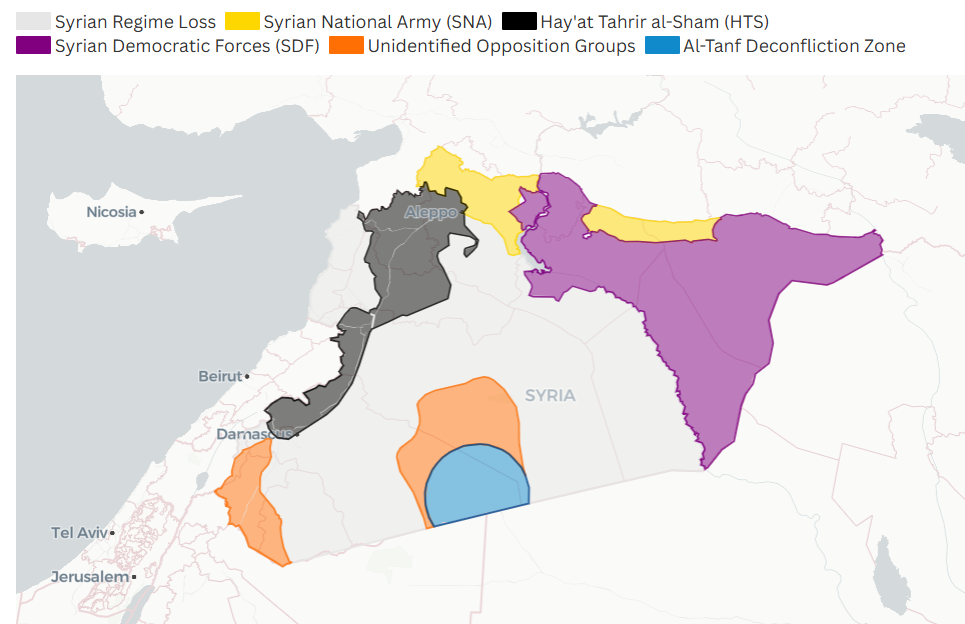
• The assessment of the threat due to military actions is LOW, except for the areas on the border with Israel where it is MEDIUM.
Lebanon
- The IDF has withdrawn from South Lebanon, with the exception of five specific key outposts, and the Lebanese Armed Forces (LAF) have taken over the positions previously occupied by the IDF. Hezbollah’s military capabilities and means in Lebanon remain low and there are no signs of a resurgence. However, the low mutual-trust between Israel and Lebanon governments related to the disarm Palestinians in host communities in the country and the pursuance of Israel to defeat Hezbollah to the end, create a factor of “uncertainty” for the peace.
- It is estimated that if Iran does not implement its intention to re-engage in the region, the situation will be normalized quickly, while it is not excluded that any ceasefire agreement between ISRAEL and HAMAS would not include deployments in the Golan Heights. Also, the risks to European vessels in the region are directly related to the stabilization of Syria and the termination of Israeli operations in its North territories (Syria-Lebanon).
- The threat assessment due to military actions is MEDIUM.
- The violent power struggle in the Tigray region, the recent attacks on humanitarian aid convoys in North Darfur, and the ongoing cholera epidemic are intensifying the general state of “uncertainty” that could lead to destabilization of the region.
- The current situation of “who controls what” is shown in the maps below

- The Sudanese Armed Forces (SAF) and the paramilitary Rapid Support Forces (RSF) are now fighting not only for domination but also for political legitimacy, as both sides escalate military operations across the country.
- However, it is estimated that the hostility in the Northwest boarders with the Haftar’s Libyan forces due to the previous days’ conflicts, will add an extra factor of “uncertainty” the next weeks.
- However, the use of the port for UN missions, which will intensify, could create conditions of a certain normality. However, it is estimated that the existence of a security team onboard ships can help not only with pure security issues but also with hygienic safety issues and control of stevedoring.
- The threat assessment due to military actions drops from MEDIUM to VERY LOW.
Libya
- The conflict has been escalated after May 12 to 23 during armed clashes in Tripoli between the 444th Brigade led by Mahmoud Hamza and the forces of the Stability Support Apparatus where Abdelghani al-Kikli, head of the Apparatus was dead, triggered a new period of armed confrontation.
- Libya is a state that has failed to maintain its cohesion after the Arab Spring. International actors have been involved in regaining cohesion, trying through mediation to help in its reconstruction but also to achieve their own goals of influence. The issue gained new importance when on April 18, the UN Security Council met for Libya issue, calling for political compromise and reforms. It is estimated that there is no unified Strategic Plan for the next day that includes its entire territory. The following tables show “who controls what and which international actors support whom”.

- The oil fields in the country are divided across the entire territory, which is controlled by the Western Government of National Accord (GNA) which has been officially recognized internationally as the Libyan government, and the Eastern territory controlled by the Libyan National Army (LNA) under General Halifa Haftar, while there is also an ISIL enclave, near the city of SIRTE, on the Mediterranean coast. However, the most oil fields are on the eastern part controlled by the forces of Haftar which they also control the security on ports. The annual per capita income today is less than 65% compared to before the Arab Spring, which is a lever for increasing crime, combined with the long period of conflict that has preceded it. It is estimated that the return to normality will not occur in the medium term. However, economic activity around the exploitation of oil wells and the reconstruction effort exists, while there are signs of armaments especially from Russia.
- The map below shows the divisions, while the country also hosts a sufficient number of ISIS members, who in the recent past participated in military operations outside Libya.


- The threat assessment due to “hostilities” is MEDIUM.
Terrorism – piracy and also cargo theft, smuggling, stowaways
- The existence of scattered terrorist groups in the Central (as in Libya) and Eastern Mediterranean (as in Syria) may not pose immediate risks to shipping, but their existence alone always implies the possibility of sudden criminal action and must be taken seriously as a threat factor.
- The successive recommendations of the JMIC in recent weeks regarding piracy activity off the coast of Somalia constitute an immediate warning for merchant ships, while the previous SEA GUARDIAN SECURITY ASSESSMENT has emphasized that pirate groups have not lost their capabilities. It is also emphasized once again that the attacks on merchant ships that occurred in the region in the first half of 2025, all resulted in captivity.
- The threats from the conflict of wars and attacks seem to have decreased, but the threat of Piracy shows increasing trends not only in Gulf of Aden but also in other regions analyzed in the present article, below, while the nature of the conflicts in Libya and the instability in Sudan-Eritrea and the Gulf of Guinea create threats that can “generate” conditions for an increase in criminal activities both at sea and in ports, near the coasts.
- RISK ASSESSMENT
- Gulf of Guinea
- Due to the political-military instability of recent months, mainly in Nigeria, the threat assessment due to “military actions” is upgraded to MEDIUM, from LOW.
- • The Gulf of Guinea, which stretches from Senegal to Angola, has been a major center for piracy and maritime crime in recent years, significantly affecting maritime trade and regional security. This includes armed attacks on ships, prolonged hostage situations, and theft of valuable cargoes such as crude oil and petroleum, with the most violent groups originating from Equatorial Guinea, Togo, and Nigeria, while the capture of crew members is common.
- • Following attacks by Islamist militants in Nigeria that forced a large number of people to flee the town of Marte, Nigerian armed forces intervened to re-gain control. However, there are reports of arms trade from the Armed Forces’ stockpiles with paramilitary groups, which if confirmed, indicates that the risk of crime is rapidly increasing.
- • The islands – Konga, Banie and Cocoteros, which are practically uninhabited so far and are under concession to Equatorial Guinea, could in the near future be used densely and uncontrollable as bases for pirate groups in the Gulf of Guinea, with the Equatorial Guinea having little capabilities to operate at sea. Such a possibility is an issue that will expand the area of operation of illegal activities in the GoG.
- • The risk of incidents for “attempted piracy” is HIGH / for “piracy, smuggling, opening fire”, since almost all incidents have resulted in boarding is VERY HIGH due to the succeeded boarding always led to aggressive criminality / while for “electronic harassment of Nautical aids” is “Non-Existing Report (NER)”.
- Central Mediterranean Sea – Libya
- Due to the political-military instability of recent months, mainly the conflict of the two divided parts of the country, the threat assessment because of “military actions” is assessed MEDIUM.
- The latest UN call for a political compromise has not so far, any results. On the contrary, there has been some recent escalation. Currently, oil production is reaching pre-Arab Spring levels of 1.5 million barrels, while production is controlled by two independent National Oil Councils (NOCs) based in Tripoli and Benghazi, respectively. Recent media reports indicate that their priority is to maintain control of both oil fields independently, while the statement of intention to move the NOC eastern to Tobruk by Haftar, indicates that there is a serious threat/information about a security risk to its NOC.
- Port control is theoretically under the single pre-existing body “Libyan Ports Company” (LPCO), but the existence of uniform rules in all ports is keenly contested, which directly affects the level of threat and creates potential for risks to ships’ security. Apart from the classification as Level 2 according to the ISPS Code, by many international non-state bodies and several states, it is unclear whether Libya or the LPCO has ratified the ISPS Code, or at least an internationally recognized state body of the country. The approach to its ports should be regulated on a case-by-case basis, with local port security control bodies.
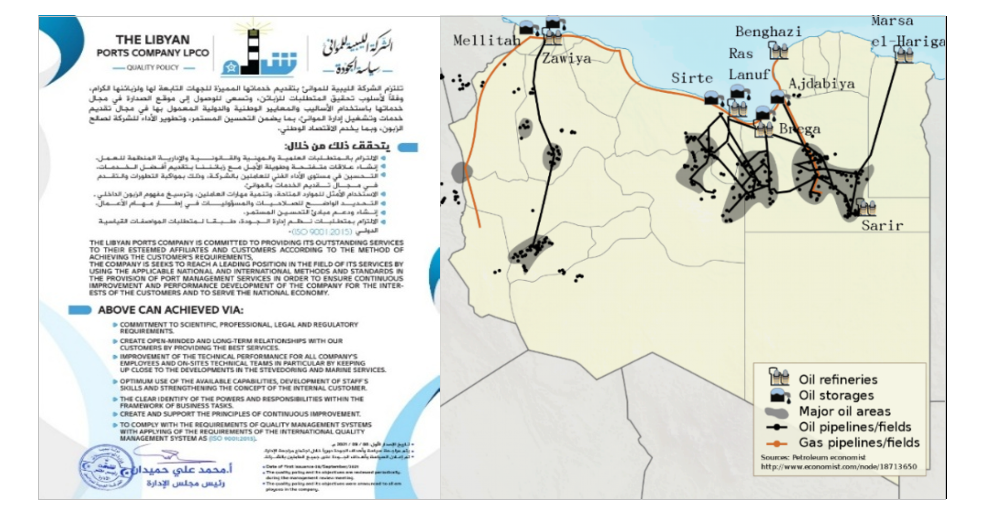
- It is estimated that the country presents opportunities, but in the midst of a war-like situation, the risks should be carefully mitigated, considering that the presence of armed guards on a ship is not completely prohibitive, provided there is a prior agreement with the local port authorities.
- The risk of incidents for “attempted piracy” is MEDIUM / for “piracy, smuggling, opening fire” MEDIUM / while for “electronic harassment of Nautical aids” is “NER”.
East Mediterranean Sea
- Due to the conflicts on its coast, the threat assessment due to “hostilities” is MEDIUM.
- The impact of insurgencies in the coastal areas of Syria and the presence of terrorist groups there could potentially pose a threat to the security of commercial shipping along the Syrian coast and ports. It is not yet clear whether the new Syrian government has achieved full control of Syrian ports, while it is estimated that the Syrian interim government has not reached any agreement with the Alawites and Druze who have not joined the ranks of the Kurds.
- There continues to be a requirement that any approach to Israeli ports must be arranged after direct contact with the Israeli authorities, while the possible approach to Lebanese ports carries an unspecified risk due to the instability in the region, but certainly a factor in reducing the inherent risk is the disarmament of areas hosting Palestinian structures.
- The recent situation in Libya following the clashes in Tripoli could create a general risk, mainly due to the existence of an organized ISIS (ISIL) enclave, which has in the past been involved in clashes outside Libya as well.
- Finally, commercial ships involved in any way with the export of Russian oil against established sanctions became targets in the near past (these specific threats require separate and specific analysis).
- All the area would be side-affected in case if Israel will execute an attack against the Iran’s nuclear power infrastructures, due to the probable response of Iran (see overall assessment).
- The risk of incidents for “attempted piracy” is “NER”/ for “piracy, smuggling, opening fire” is LOW / while for “electronic harassment of Nautical aids” is “NER”.
Israel – Hamasconflict
- The threat assessment due to “military actions” drops from HIGH to LOW due to the absence of attacks, even by mistake on commercial shipping. Nevertheless, Israeli attacks are now in areas far from the coasts.
• It is estimated that in the coming period, Israel will intensify its military operations in an effort to destroy Hamas’ military capabilities, but also to remove as much as possible the danger of Hezbollah for the next day, even if there would be an international reaction due to the humanitarian crisis.
• After the repeated attempts to have a plan for peace negotiations in the region, which were accepted sometimes by one side and sometimes by the other respectively, there is a proposal at the moment that Israel accepts but Hamas does not, because it provides for a complete demilitarization. It is estimated that the main reason is that Israel wants Hamas to be forced to leave the region, while it is assumed that secretly has the support of Hezbollah, which is a potential future leg of IRAN in the region.
• The US is rather neutral in what ISRAEL will do in the region and they are interested in the commitment of Israel not to carry out any attack against IRAN that targets nuclear facilities, as the negotiation are lasted. However, there are causative signs that US would withdraw the prohibition to Israel to carry out operations for that reason. It is assessed that such information could be manipulated by the US to put pressure on the Mullah regime in Teheran.
• It is estimated that the “bold” proposed plan of the US President for the US to take control of the Gaza Strip with the aim of rebuilding and relocating Palestinians to other Arab countries, having supporters mainly Egypt and Jordan although it has been rejected by most Arab countries. It is gradually advancing as the only solution to the geopolitical impasse in the Middle East, beyond any other proposed solution.
• Reactions have been intensifying recently within Israel for the continuation of operations by the IDF, something that does not seem to affect Netanyahu’s decisions for the time being.
Syria
- The state-building effort will continue, benefiting from the support of Turkey, the US and the loose acceptance of the EU, while there does not seem to be any agreement with the Alawite and part of the Druze militias havimg not joined yet the SDF forces. It is estimated that President Al-Asraa will seek their political integration, wanting to avoid increasing the risks in Western Syria and the Mediterranean coast, avoiding taking any military action that could result in atrocities.
Cooperation between Turkey, HTS and the Syrian Interim Government seems to be stabilizing, given the absence of military clashes in Eastern and Northern Syria.
- Although Egypt considers HTS as a potential threat due to its ties with Turkey and the Muslim Brotherhood and has reluctantly invited Syria to return to the Arab League Council, it does not seem to want any further involvement in the region.
- Russia seems, even with a small presence, to maintain its bases in Syria, while the attack on Russia’s Khmeimim air base at the end of last month had no follow-up, although it was initially estimated that there would be a reaction. However, its complete disengagement from Syrian territory does not seem likely.
- Over the past two months, the Syrian interim government has successfully established lines of communication and revived diplomatic relations with Turkey, most Arab states, the US and the EU, although the risk of a relapse into a conflict situation depends mainly on internal factors rather than external interventions. It seems that the international community has completely shifted responsibility to the interim government.
- For a more detailed update on the initial situation in Syria, at the beginning of this semester see SEA GUARDIAN SG LTD SECURITY ASSESSMENT March 2025.
• On the coasts of Syria, the risk for “attempted piracy” is “NER” / for “piracy, smuggling, opening fire” is LOW / and for “electronic harassment of maritime aids” “NER”.
Lebanon
- Due to clashes between Hezbollah and possibly Hamas groups, the threat assessment for “hostile actions” is MEDIUM.
- In Lebanon, over the coming period, it is estimated that the Hezbollah army will be gradually but steadily driven out by the Lebanese Army (LAF) which has taken over positions previously held by the Israeli Armed Forces (IDF), in accordance with the agreement that followed the ceasefire period and ended on February 18. The agreement, which allows the Israeli Armed Forces to maintain control of 5 key outposts inside Lebanon, will provide the future basis for Israel to reach an agreement with the new Lebanese leadership. However, the Israeli airstrike on South Lebanon on the evening of Thursday, June 05, threatens the continuation of the ceasefire.
- Hezbollah needs time and support from Iran to rebuild and reorganize. Following the statements of the Iranian Foreign Minister to review its stance on Lebanon and its intention to support Hezbollah, with the corresponding expressed opinion of the Lebanese Foreign Minister that Iran’s support to Hezbollah creates conditions for destabilizing his country. This would entail the creation of a new risk to peace in the country.
- On the coasts of Lebanon there is no risk of “attempted piracy” (NER) / for “piracy, smuggling, opening fire” is MEDIUM / while for “electronic harassment of maritime aids” is “NER”.
Suez Canal – Northern Red Sea
- The threat assessment due to “hostilities” has been reduced from MEDIUM to VERY LOW, while for ships approaching Jordanian ports from the south, it remains MEDIUM with a tendency to become LOW.
- The risk to commercial shipping passing through the Gulf of Aqaba, if the ships are heading to ports in Jordan, Egypt or Saudi Arabia and do not have ties to Israel, has been reduced to LOW, as the Houthis have concluded a non-aggression pact with the US. The risks have been mitigated, after the third ten days of May.
- The de-escalation environment around the Arabic Peninsula is directly influenced by the existence of talks between the US and Iran, which shows a major decline in military actions. However, this is a factor for the escalation of the traditional criminality against merchant vessels.
- In general, although a steady increase in the transit of merchant vessels through the Red Sea has not been re-stabilized since the peace in the region has not been assimilated by the global market, there is certainly a trend for normalization, there will be a clear indication of the increase of the maritime flow by the end of June, when possibly new facts and figures will arise.
- Opportunity is created due to the reduction of the transit fees in the Suez Canal, which is currently valid until the end of August, allowing shipping to re-evaluate the return of the flow of commerce through the Red Sea.
- Due to the safety of navigation, off the coasts of Syria and Lebanon, in the Suez Canal and in the Northern Red Sea, the risk of incidents for “attempted piracy” is VERY LOW / for “piracy, smuggling, opening fire” is LOW / while for “electronic harassment of Nautical aids” is “NER”.
Bab-el-Mandeb Straits – Southern Rea Sea
- Threat assessment due to actions of war is considered LOW, as far as the Houthis maintain consensus for not attacking vessels since January 2025.
- In view of the recent escalation between Israel and the Houthis, it is highly likely that ships of direct or indirect Israeli interest are priority targets and could be attacked at short notice.
• International Maritime Operations “US-UK PROSPERITY GUARDIAN” and “EU ASPIDES”, although the security situation has improved, will continue to patrol the area on high alert.
• Recent information regarding the unrest in Sudan-Ethiopia and Eritrea is assessed as worrying and should prompt the shipping industry to strengthen its security posture when transiting or visiting ports along this coastline, especially when visiting Port Sudan considering the new health risks and the rebels attacks (RSF).
• Electronic harassment risks to ship navigation and electronic/communications/navigation security have re-emerged in the region, particularly for ships near the coastline or in ports dominated by the Houthi which combined with the approach of ships by vessels manned with armed crews posing as government officials, seem to be under a new combined risk.
- It is estimated that the capabilities of Somali pirates continue to exist and will manifest themselves immediately when the high-density military operations will be reduced in the region. So, the re-emergence of piracy cannot be excluded.
• Due to the unstable situations in Middle East and the Northern Red Sea (Sudan-Eritrean), the risk of incidents of “attempted piracy” is VERY LOW / for “piracy, smuggling, opening fire” is VERY LOW / while for “electronic harassment of Nautical aids” is “LOW”.
Gulf of Aden – Somalia
- The threat assessment due to “hostilities” is now considered LOW, except for Israeli ships that remains MEDIUM, while it is not currently clear whether there is an escalation or de-escalation between ISRAEL-HOUTHI. There is simply a decline in attack events in accordance with the situation in the Middle East.
- It is estimated that especially for all shipping, with any type of charter except the “BAREBOAT” type, for which only the ship insurance is required by the owner, the discount by Suez Authorities and the natural dependence of the ship and cargo guarded by security teams, seems very attractive. The opportunity from the use of the Red Sea can create competitive freight rates and alleviate the western markets of the high prices after the announcement of US fees in imports.
• The eastern part of the Gulf of Aden continues to be assessed as one of the most dangerous areas for international shipping, without any significant incident having occurred in the recent period. However, the requirements for the implementation of preventive security measures when sailing in the international corridor are suggested.
• The risk of incidents for “attempted piracy” is VERY LOW / for “piracy, smuggling, opening fire” VERY HIGH / while for “electronic harassment of Nautical aids” is “NER”, not due to the non-existence of the threat but mainly due to the current absence of incidents.
Arabian Sea – Gulf of Oman
- In the Arabian Sea and the Gulf of Oman, the risk of incidents for “attempted piracy” is VERY LOW / for “piracy, smuggling, opening fire” is VERY LOW / while for “electronic harassment of Nautical aids” is LOW, not due to the non-existence of the threat but mainly due to the current absence of incidents.
Hormuz Straits – Persian Gulf
• The ongoing negotiations between the US and Iran significantly reduce tensions and uncertainty for approaching ships.
• In the Strait of Hormuz and the Persian Gulf, the risk of incidents for “attempted piracy” is LOW / for “piracy, smuggling, opening fire” is VERY “NCR” / while for “electronic harassment of Nautical aids” is LOW, not due to the absence of the threat but mainly due to the current absence of incidents.
Malacca Straits
• Incidents in the first quarter of this year have increased, and it is known that pirate groups in the region have extensive experience in such operations. The hotspots for the current quarter are in the Singapore Strait, mainly at the entrance and exit of the Strait. In terms of risk and geographical area of the SOMS (Straits of Malacca and Singapore), the three hotspots are Pulau Karimun, near the eastern entrance of the Strait of Malacca, Pulau Cula, near Phillip Channel in the southernmost corner of the Straits Traffic Separation Scheme, and Tanjung Tondong, near the eastern entrance of the Singapore Strait. The pirates usually operate at night and have a strong preference for targeting slow-moving cargo ships in the eastbound lane.
- The risk of incidents for “attempted piracy” is HIGH / for “piracy, smuggling, opening fire” is “VERY HIGH” not due to the absence of a threat, but mainly the tendency not to be captured, but simply to rob / while for “electronic harassment of Nautical aids” is “NER”.
Piracy – Boarding conditions, hijacking, smuggling, electronic harassment
- During the last four months, two main sources of risk have emerged, the first concerns the risk of piracy resulting in the capture ships. The risk of attempted piracy may be lower and this concerns the areas of Somalia and the Gulf of Guinea, but boarding and fired circumstances are more. The Straits of Malacca present an equal risk between attempts and capture. The later concerns the electronic harassment of maritime aids, creating a source of risk with unclear signs regarding its correlation with the aim of piracy.
- The risks of criminal actions against ships in ports or near shores when approaching ports, is mainly in the areas of the Gulf of Guinea, Libya and the Straits of Malacca.
OVERALL ASSESSMENT
• The signing of the order by Trump blocking entry into the US of citizens of specific countries is estimated to be mainly due to recommendations and assessments, rather coming from the Security sector than the State Department. The reasons are related to the claim of disability, these countries have to confirm International documents (such as passports) for their citizens being abroad. Among the ban countries, are countries that are examined by this process such as three in the Gulf of Guinea (Conga, Equatorial Guinea and Togo, not with a complete ban), Libya, Sudan-Eritrea and Yemen. It is estimated that the “ban countries” are of “critical risk”.
- Following Egypt’s announcement of a discount on Suez transit fees, the Suez Canal Authority (SCA) is seeking to work directly with shipping companies to restore the maritime flow to pre-war levels. It doesn’t assume that the Maritime industry has respond positively, yet. The US and China are in talks with Egypt to set up a MARITIME LOGISTICS facility in Suez. The flow through the Red Sea doesn’t seem to have been reinstalled due to either shipping follow already signed charterers, or do not trust yet the peace-period as it ensued.

It is estimated that a possible attack of Israel against the nuclear installations of Iran would provoke a series of undefined risk to India-Middle East-Europe Economic Corridor (IMEC). It is estimated that a US agreement with Iran for its nuclear program is under the direct control of Donald Trump, who committed Israel not to take any military action against Iran, so far, even if a sudden change of this prohibition is not out of a near future decision. The US is prepared for this by withdrawing the non-appropriate delegations and personnel form the vicinity. The US could wait for Iran to decide on the deal since its nuclear threat does not pose a direct danger to them. Israel was pushing for Trump to lift the ban in order to attack, since the threat is immediate and is convinced that if there is no agreement soon, an attack is the only way to ensure that the Iranian nuclear program is not been completed. But after the Israeli attacks on June 13, the situation has gone worst while the international community wait for what is going to be the next. This morning the international oil market hit the 9% rise. This SEA GUARDIAN Security assessment advices the calmness to Maritime industry and urges to focus on what shipping companies can do for the other issues except the war actions in the area, due to the principle that “the world market needs to function”. The security situation around the Arabic Peninsula is fragile and unpredictable for the next days or weeks.
- The ongoing disruption of GNSS systems (GPS, GALILEO, GLONASS) such as ECDIS, ARPA, AIS, and GMDSS stations in the wider area of the Straits of Hormuz and the Red Sea is considered to be a sign of modernization in the harassment. According to the JMIC reports as well as our previous assessment, the recommendation of traditional Shipping use is the most certain method to avoid diversions of the route. The following map shows the areas with intensity of the harassment phenomena.
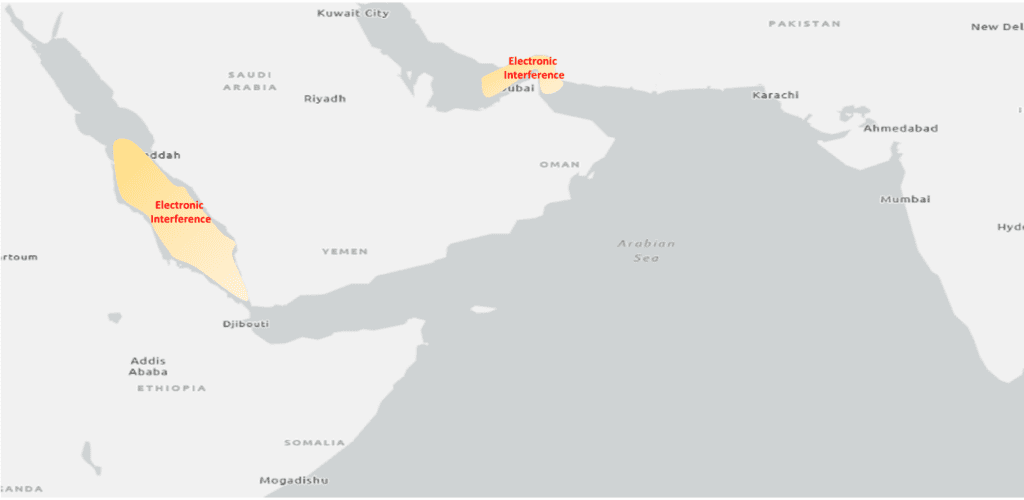
- Also, the outcome of a piracy attempt, although it is more frequent in the Straits of Malacca than in the Gulf of Guinea, the common denominator for the two regions is the savagery that is committed for a small reward as the aim is the partial robbery and not the capture of an entire vessel, while the possibility for murder is high.
- It is estimated that the idea of permanently installing an armed or unarmed group on recurring voyage charters (liner charter or voyage charter type) would be not far from the reality which the “uncertainty” in International Security is created.
- Additionally, to the aforementioned, there are reasons for a more in-depth security assessment of specific destinations, so that it works as a more causative criterion for the presence of armed security teams and for the duration of this presence as well as the demands for additional insurance coverage. In the cases of time charter and voyage charter as well as in liner shipping, the security team could stay permanently on board the ship, depending of course on the “ports of call”.
- After the statement of Iran claiming its return to Hezbollah in Lebanon, provoking the reaction of the Lebanese Minister of Foreign Affairs, it is estimated that the overall stance of Iran is ambivalent in order we infer that the situation has been stabilized.
- Finally, it is apparent that the interim government in Syria seeks to end internal issues before the cessation of operations by the Israelis against Hamas and Hezbollah, using the current situation as a lever of pressure.
Usefull links for military actions and picture of piracy attacks in:ACLED and IMB/ICC.
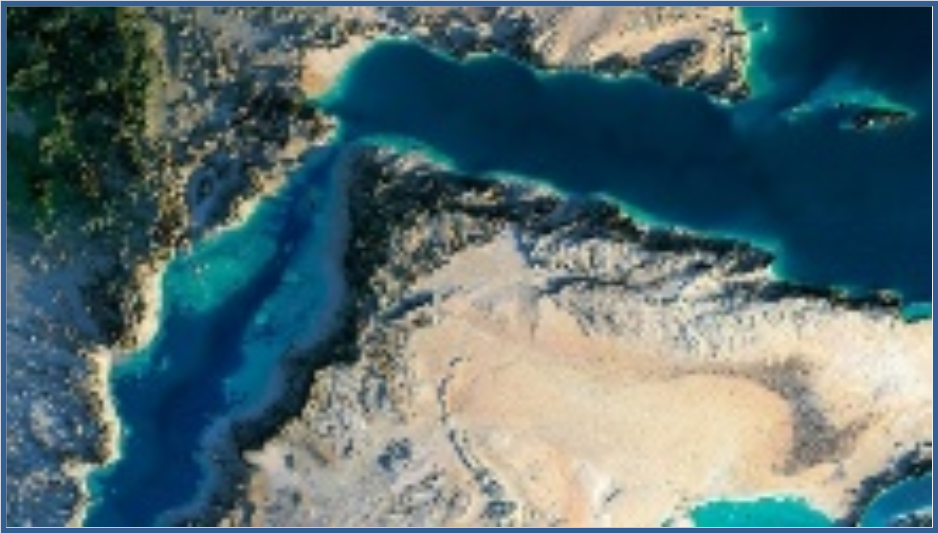
Sea Guardian S.G. Ltd / Intel Department (www.sguardian.com / +30 6944373465) can support your operational planning, assist in determining the risk assessment and provide assistance in decision making by producing tailor-made assessments upon request on ports in the region, on routes, on cargos and specific merchant vessels. You can refer to our previous Threat & Risk assessment analysis briefs for more information and background analysis on the events and situation in the region.
www.sguardian.com
Viewers can read here below SEA GUARDIAN’s Threat & Risk Assessment dd 20-30 May 2025:
/
info@sguardian.com /
tel. +302109703322





